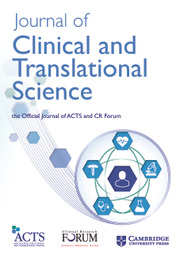No CrossRef data available.
Article contents
69 Prevalence of port-site metastasis in laparoscopic surgeries for gynecologic cancers and its risk factors: A systematic review and meta analysis
Published online by Cambridge University Press: 11 April 2025
Abstract
Objectives/Goals: Port-site metastasis (PSM), defined as the spread of malignancies to the abdominal wall at the site of surgical ports, poses a significant challenge in cancer management. The objective of this summary overview is to describe the prevalence of and risk factors associated with PSM in various gynecological cancers after laparoscopic surgery. Methods/Study Population: Study design: Systematic Review and Meta analysis Search strategy: All international databases, without language limitations, from January 1990 to December 2023. Inclusion/exclusion criteria: Cohort, case–control, or cross-sectional observational studies reporting the frequency of, or risk factors for PSM in young and middle-aged women will be included (using the PRISMA checklist). Data extraction: two reviewers independently extracting pertinent data (using the STROBE checklist). Quality assessment and risk of bias: The quality of each study will be assessed according to the Quality Assessment Tool for Observational Studies. Results/Anticipated Results: This meta-analysis of 36 studies evaluated the proportion of successes across various populations, with a pooled proportion of 0.02 (95% CI: 0.01–0.02) based on a random-effects model. Significant heterogeneity was identified (I² = 88.12%), reflecting notable variability between studies. Despite this, the overall effect was statistically significant (p = 0.00). A subgroup analysis will be conducted to explore potential sources of heterogeneity, considering factors such as cancer stage, diagnostic methods, surgical approach (conventional or robotic), and study type (retrospective/prospective). Discussion/Significance of Impact: By identifying the prevalence of, and the risk factors for, PSM, this study will better inform personalized treatment approaches, surveillance strategies, and surgical decision-making to improve patient-related outcomes and long-term survival in women with gynecological malignancies.
Information
- Type
- Biostatistics, Epidemiology, and Research Design
- Information
- Creative Commons
- This is an Open Access article, distributed under the terms of the Creative Commons Attribution-NonCommercial-NoDerivatives licence (https://creativecommons.org/licenses/by-nc-nd/4.0/), which permits non-commercial re-use, distribution, and reproduction in any medium, provided the original work is unaltered and is properly cited. The written permission of Cambridge University Press must be obtained for commercial re-use or in order to create a derivative work.
- Copyright
- © The Author(s), 2025. The Association for Clinical and Translational Science

